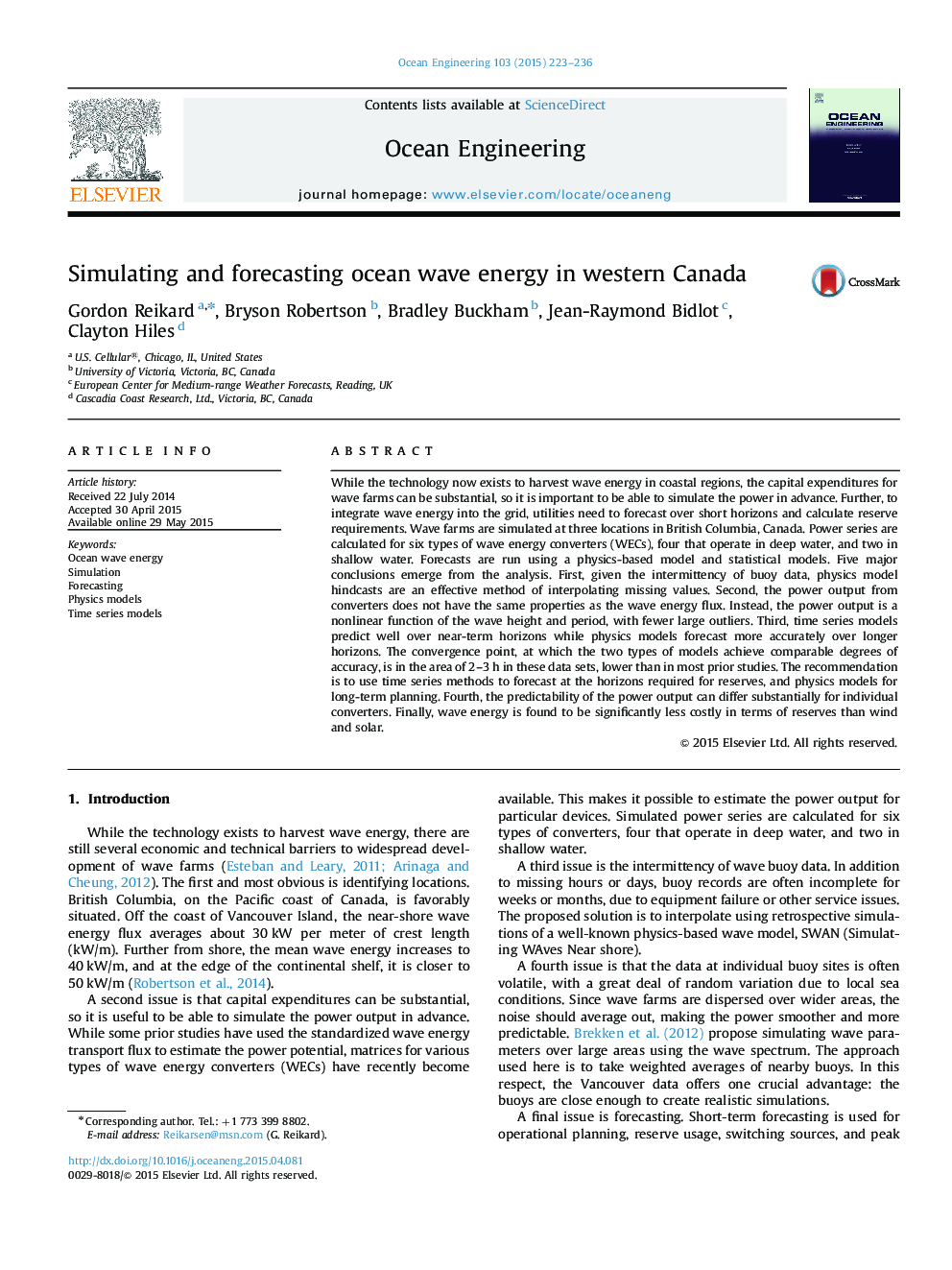| کد مقاله | کد نشریه | سال انتشار | مقاله انگلیسی | نسخه تمام متن |
|---|---|---|---|---|
| 1725454 | 1520687 | 2015 | 14 صفحه PDF | دانلود رایگان |
• Simulations and forecasts are run for six types of wave energy converters.
• Physics model hindcasts are used to interpolate wave data.
• Time series models predict well over short horizons while physics models predict well over longer horizons.
• The predictability of the power output can differ substantially for individual converters.
• Wave energy is less costly, in terms of reserves, than wind or solar.
While the technology now exists to harvest wave energy in coastal regions, the capital expenditures for wave farms can be substantial, so it is important to be able to simulate the power in advance. Further, to integrate wave energy into the grid, utilities need to forecast over short horizons and calculate reserve requirements. Wave farms are simulated at three locations in British Columbia, Canada. Power series are calculated for six types of wave energy converters (WECs), four that operate in deep water, and two in shallow water. Forecasts are run using a physics-based model and statistical models. Five major conclusions emerge from the analysis. First, given the intermittency of buoy data, physics model hindcasts are an effective method of interpolating missing values. Second, the power output from converters does not have the same properties as the wave energy flux. Instead, the power output is a nonlinear function of the wave height and period, with fewer large outliers. Third, time series models predict well over near-term horizons while physics models forecast more accurately over longer horizons. The convergence point, at which the two types of models achieve comparable degrees of accuracy, is in the area of 2–3 h in these data sets, lower than in most prior studies. The recommendation is to use time series methods to forecast at the horizons required for reserves, and physics models for long-term planning. Fourth, the predictability of the power output can differ substantially for individual converters. Finally, wave energy is found to be significantly less costly in terms of reserves than wind and solar.
Journal: Ocean Engineering - Volume 103, 15 July 2015, Pages 223–236
